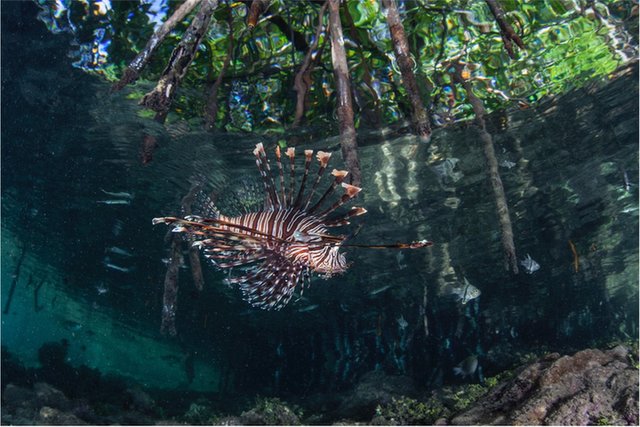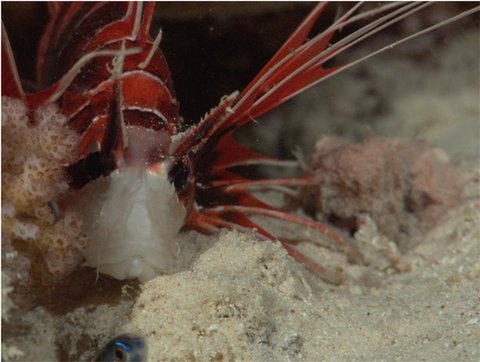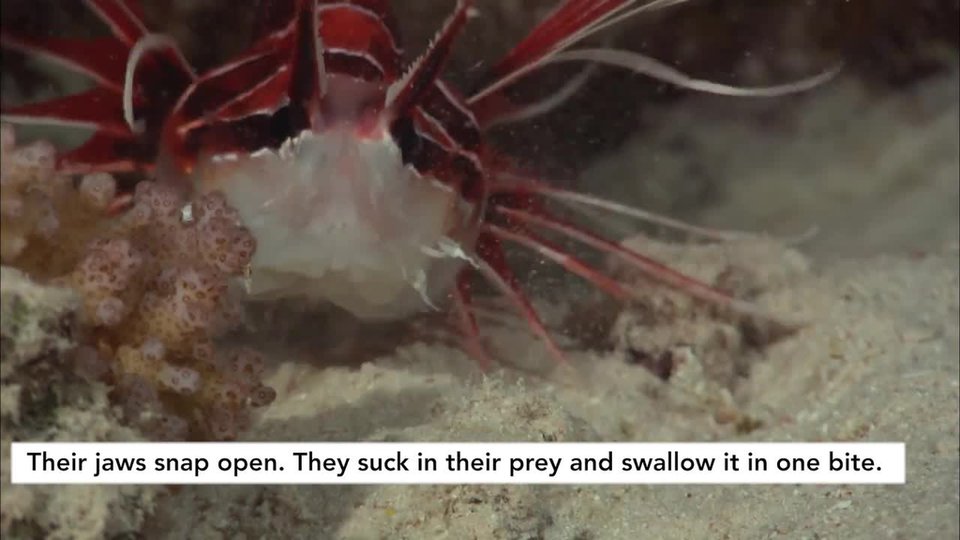HowBadIsIt?
In2010,scientistsnamedthelionfishamajorthreattobiodiversity.Insomeplaces,lionfishhavereducedfishpopulationsby80percent. How?
Unlikemanyotherfish,lionfishneversaynotofood.Theycaneatonetotwofishperminute.Thisaddsuptohundredsofthousandsoffishayear.Theyfeedmostlyonsmallfish.Yet,lionfishcanwipeoutentiregroupsofcrustaceans,likeshrimps,too.Theyalsoeattheyoungoflargerfish.Thismakesithardforsomespeciestogrowin number.

Alionfishswimsnearamangrove forest.
NewRules
Mangroveforestshavealwaysbeenasafehavenforyoungreef fish.Theunderwaterrootsofmangrovetreesprovidebothfoodandcover.Fewpredatorshuntinitsbrackish waters.Butlionfishdon'tfollowtheserules.Theyhunttherewithease.Thismakesthemespecially dangerous.

Thisyoungsnapperisbeingcleanedbyhumpbackcleaner shrimp.
Lionfishdisruptcoralreefs,too.Cleaningstationsthereare“safetyzones.”Largerfishlineuptogetparasitespickedoffofthembysmallerfish.Thesmallfishgetameal.Thelargefishgetclean.Andnofishgetseatenwhiletheworkisbeingdone.Unlessalionfishcomes by!
Lionfishalsoeatmanyfishthateatplantsandalgae.Algaeareatypeofplantthatgrowoncorals.Whenthefishthateatthemaregone,algaegrowoutof control.
Algaecovercorals,chokingoutthelighttheyneed.Thisleadstothelossofhabitatforallreef creatures.
Theselionfishcrowdtogetheronacoral reef.


